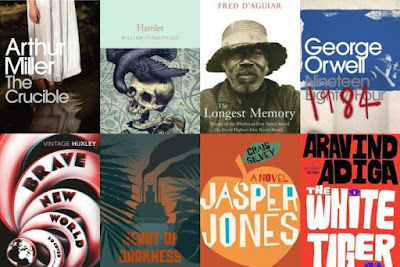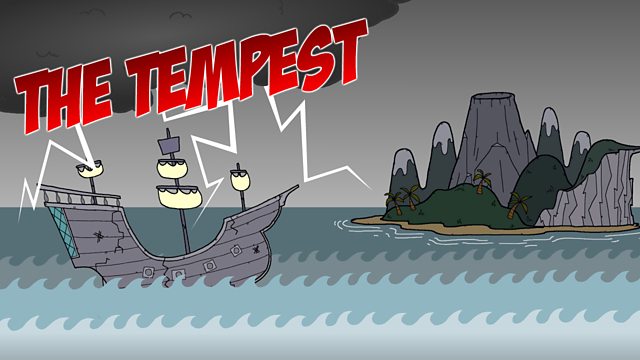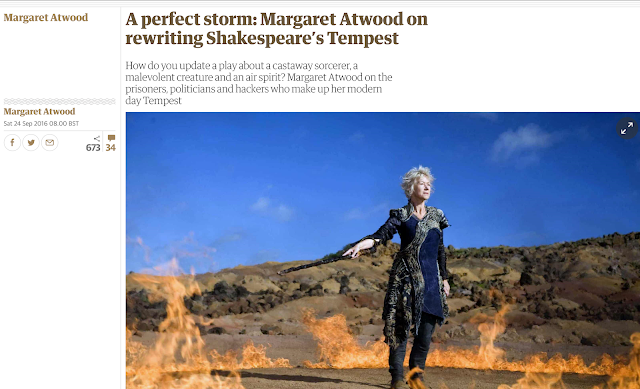To begin with, I explain the new HSC syllabus and provide a rationale for my chosen focus content (Module A for Advanced English students) and give a little introduction about the kind of students I might expect would be in my classroom.
Setting the Scene: New NSW Syllabus 2019 for HSC
It is a rather challenging time to be a pre-service high school English teacher as the new HSC syllabus comes into effect. I spent the better part of a week scouring through the new English Syllabus and trying to wrap my head around the HSC 2019-2023 modules and prescribed texts. The new syllabus for Stage 6 has been developed by the newly named NSW Educational Standards Authority, NESA (the old Board of Studies).
According to NESA, all students must study the Common Module and as such, is a mandatory unit for all students doing the English HSC, be it students who are doing the English EAL/D, Advanced or Standard exam. Students will have to study texts from different mediums.
 |
| Senior English Texts |
The new English syllabus shows that there will be a very strong focus on writing skills. According to an interview with Louise Ward, NESA Inspector English and Literacy, "This focus on writing builds on the recently launched English K-10 syllabus. In all senior English courses, students will continue to have the opportunity to develop their writing skills and their knowledge to use language accurately and appropriately for a range of purposes and audiences."
Thus, in creating a multimedia resource that is suited for Y12 in preparation for the HSC, I will have to focus on giving my students opportunities to experience texts which give insight into social, gender and cultural perspectives.
Preparing for a diverse student population
As I've chosen to put together resources based on a module that only advanced students are taking, I foresee that the class makeup would include students who are gifted and talented, students from different ethnic backgrounds and likely also have students who are diagnosed with Asperger's Syndrome or are ADD. I also take into account that there may be students who might have a physical disability such as vision or hearing impairment. I will also cater to dyslexic students. Not forgetting, these students will all come with different styles of learning (auditory, visual, kinaesthetic). My teaching approach would suit these different learning styles and needs.
I draw from an article from Roell (2019), who succinctly lists the type of learners and the best ways they learn:
Visual
- Strengths of the visual learner:
- Instinctively follows directions
- Can easily visualize objects
- Has a great sense of balance and alignment
- Is an excellent organizer
- Best ways to learn:
- Studying notes on overhead slides, whiteboards, Smartboards, PowerPoint presentations, etc.
- Reading diagrams and handouts
- Following a distributed study guide
- Reading from a textbook
- Studying alone
- Strengths of the auditory learner:
- Understanding subtle changes in tone in a person's voice
- Writing responses to lectures
- Oral exams
- Story-telling
- Solving difficult problems
- Working in groups
- Best ways to learn:
- Participating vocally in class
- Making recordings of class notes and listening to them
- Reading assignments out loud
- Studying with a partner or group
Kinaesthetic
- Strengths of the kinaesthetic learner:
- Great hand-eye coordination
- Quick reception
- Excellent experimenters
- Good at sports, art, and drama
- High levels of energy
- Best ways to learn:
- Conducting experiments
- Acting out a play
- Studying while standing or moving
- Doodling during lectures
- Studying while performing an athletic activity like bouncing a ball or shooting hoops
References:
Roell, Kelly. (2019, August 23). Understanding Visual, Auditory, and Kinesthetic Learning Styles. Retrieved from https://www.thoughtco.com/three-different-learning-styles-3212040



























